UWF Archaeology Explores Mission Dating Back To 1741 In Molino
June 30, 2025
University of West Florida archaeology students wrapped up a three-week dig last week in Molino, further investigating the over 280-year-old remains of San Joseph de Escambe, a mission constructed in 1741 near the Escambia River.
The Mission San Joseph De Escambe was established upriver along the Escambia River — which, along with Escambia County, actually took its name from the mission near Molino. The Apalachee Indian settlement with dozens of residents is well documented, according to archaeologist John Worth. It was established in the 1740’s. A Franciscan missionary was stationed by the Spanish at the village along with 15 members of a Spanish cavalry unit until about 1757.
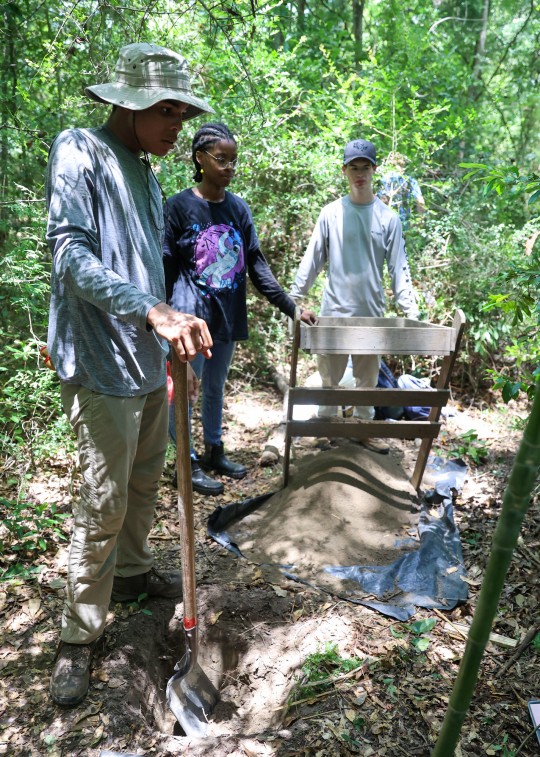 The village was led by Apalachee Chief Juan Marcos Fant until it was destroyed during a Creek Indian raid on April 9, 1761. The village and the church were at least partially burned during the raid. Following the raid, the residents moved down the Escambia River to what is now downtown Pensacola.
The village was led by Apalachee Chief Juan Marcos Fant until it was destroyed during a Creek Indian raid on April 9, 1761. The village and the church were at least partially burned during the raid. Following the raid, the residents moved down the Escambia River to what is now downtown Pensacola.
The Mission was uncovered in 2009 by the UWF archeology students under the leadership of professor of Worth, who spent years digging through historical records before the actual digging in Molino began. Exactions were paused a decade a ago when the de Luna settlement near downtown Pensacola was found and explored.
This year, both graduate and undergraduate students from the UWF Archeology program spend three week in the field school.
For a photo gallery, click here.
“It’s an important site with a lot of history that has not been disturbed,” UWF archeology professor John Worth said last week as he lead NorthEscambia.com through the site — through swarms of mosquitoes with near constant warning about the abundant poison ivy in the thick woods a few hundred feet from the Escambia River.
While we there, students were conducting “shovel tests” — digging small holes about 19.5 by 19.5 inches (50cm x 50cm) too “spot check” for important remnants and clues. While we there, they unearthed a small sherd of of pottery possibly dating to the Mission, and an interesting brick fragment was uncovered by a student.
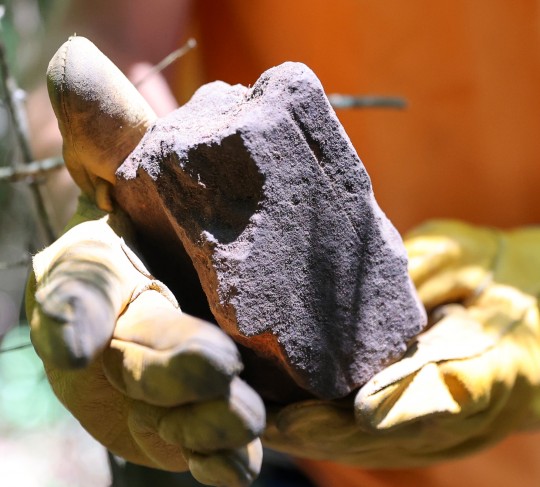 “That looks it could be British,” Worth said. “It’s different than the bricks made in later periods here.” The brick will go back to the university for some high tech tests to determine its composition and likely time period.
“That looks it could be British,” Worth said. “It’s different than the bricks made in later periods here.” The brick will go back to the university for some high tech tests to determine its composition and likely time period.
During the field school, students also located a lead ball that was likely colonial-era buckshot and glass seed beads, including a turquoise-colored seed bead. The beads were used for trade between European settlers and local indians, with the beads often traveling trade routes well into the Americas.
As students dug, the dirt was carefully sifted to look for any artifacts. They kept small contained firms smoldering nearby so that the smoke would keep mosquitoes away, much like the Apalachee like did at the Mission.
One discovery, or actually the lack of a discovery, disappointed Worth this year. During a previous excavation years ago, they found remnants of a wall that were marked. This year, excavations on either side of the wall revealed that the wall didn’t seem to extend anywhere.
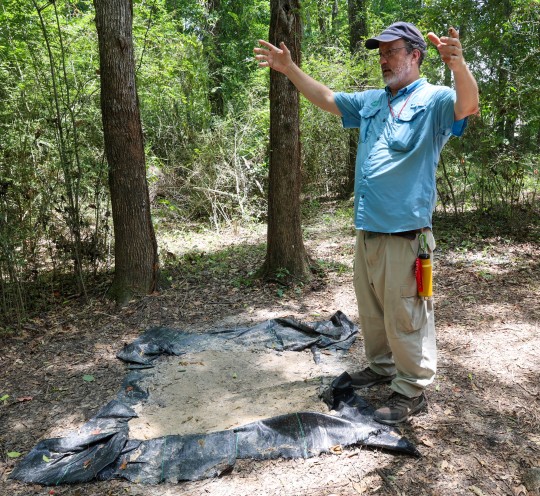 “We had thought it was the remnants of the church,” he said, explaining the layout (pictured left). “It was disappointing to learn that maybe it was not.”
“We had thought it was the remnants of the church,” he said, explaining the layout (pictured left). “It was disappointing to learn that maybe it was not.”
Worth said he plans to bring the archeology field school back to Molino next summer, perhaps spending more time in the search for Mission San Joseph De Escambe history, and a few students may be explore more recent history, including the once thriving Molino Mill sawmill that was built nearby in 1886.
“There’s a lot of history here in Molino, a lot of history.”
For a photo gallery, click here.
Editor’s note: The archaeological site in Molino is located on private property and is not accessible to the public.
NorthEscambia.com photos, click to enlarge.
Comments
5 Responses to “UWF Archaeology Explores Mission Dating Back To 1741 In Molino”



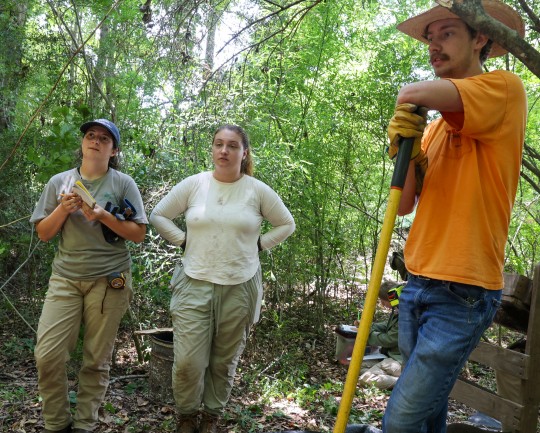
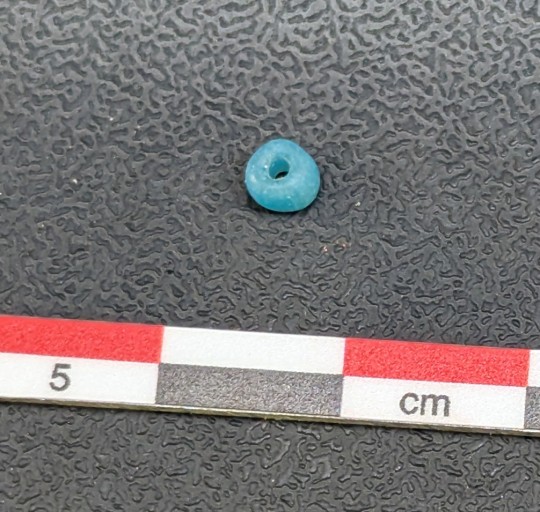
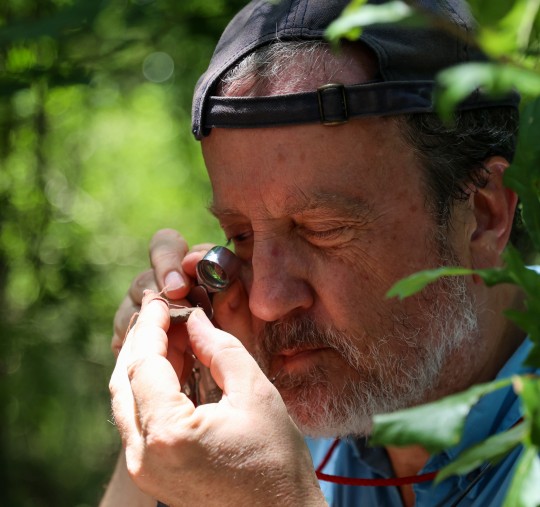
Pensacola- City of 5 Flags is also Escambia County of 5 Flags. The whole county is full of historical artifacts. The encampments in Gonzalez, along Dig Rock Creek, and other unknown sites where the Spanish fought natives and all the other conflicts in those areas. We have found musket balls, rifle parts and uniform pieces from Red Coats, Civil War and Indian artifacts on the land of my grandfather Gerald Commings in Cottage Hill. recently found a Generals medal that was only awarded to 5 Generals.
Wow! That is so cool! I would love to learn about the history of Molino! Great article!
Just curious, but wouldn’t winter be a better time to do this? They have to miserable out there in the heat with the mosquitoes.
@local
Many years ago a coworker told me about a book written by a local man. The book was about a Spanish ship that went up the Escambia river at high tide and became stranded after the tide went out. I was young and not that interested in the history lesson at the time. Unfortunately I don’t know the authors name.
Interesting to hear about Molino’s history from so long ago. Does anyone know any rumors or ‘tall tales’ about Spanish boats leaving gold buried up around the Escambia River, Parker Island area?